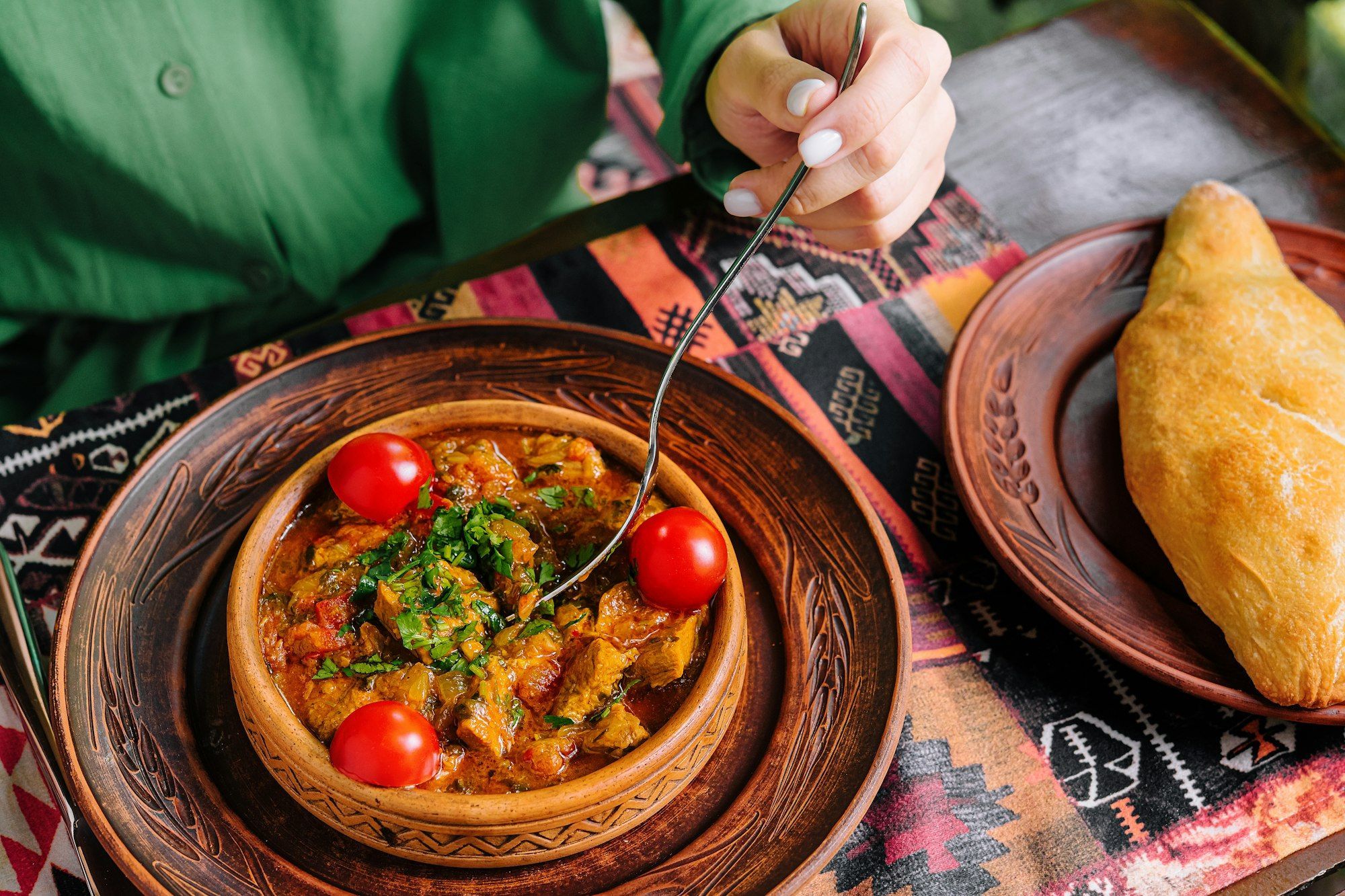Whether you're a novice in the kitchen or looking to refine your culinary skills, practical cooking tips can elevate your experience. Simple hacks can save time, enhance flavors, and tackle common challenges. From mastering knife techniques to perfecting seasoning, these insights will empower you to approach cooking with confidence. Unlock the joy of creating delicious dishes with these essential tricks that promise to transform your culinary adventures.
Essential Knife Skills
Mastering knife skills is crucial in the kitchen, transforming food preparation into a safer and more efficient experience. Proper knife techniques not only enhance cooking precision but also ensure safety, reducing the risk of accidents.
Also read : How to Master the Art of Cooking Shaping the Future of the Industry
Understanding the purpose of different types of knives is fundamental. For instance, a chef's knife is versatile, suitable for a variety of chopping techniques like dicing onions or slicing meat. A paring knife, on the other hand, excels in tasks requiring precision, such as peeling fruits or deveining shrimp. Bread knives, with their serrated edges, are perfect for slicing through crusty loaves without crushing the soft interior.
Safety is paramount when using knives. Always keep your knives sharp; a dull knife is more likely to slip and cause injury. Ensure your cutting board is stable to prevent any unexpected movements during food preparation. Use a secure grip on the knife handle, and adopt the "claw grip" with your other hand to protect your fingers while chopping.
Also read : Delicious Recipes You Need to Know About
Incorporating these knife skills into your routine will not only make cooking more enjoyable but also more efficient. With practice, you'll find that proper chopping techniques can significantly enhance your culinary creations, making meal preparation a seamless and rewarding process.
Ingredient Substitutions
Navigating the world of ingredient substitutions can transform your cooking experience, turning potential obstacles into opportunities for creativity. Whether you're out of a key ingredient or catering to dietary restrictions, knowing some cooking hacks can be a game-changer.
For common swaps, consider these: if a recipe calls for buttermilk, mix milk with a tablespoon of lemon juice or vinegar. Need an egg replacement? Use a quarter cup of applesauce or mashed banana. These pantry staples can save a trip to the store and maintain the integrity of your dish.
For those with allergies or dietary restrictions, understanding alternatives is crucial. Almond or soy milk can replace cow's milk, while coconut oil or applesauce can substitute butter in baking. Gluten-free flour blends are readily available for those avoiding wheat.
Creating substitutes with pantry staples requires a bit of ingenuity. For instance, if you're out of breadcrumbs, crushed crackers or oats can stand in. Yogurt or sour cream can be interchanged in many recipes, providing similar moisture and tang.
These cooking hacks not only accommodate various needs but also encourage resourcefulness in the kitchen. With a well-stocked pantry and a little knowledge, you can adapt almost any recipe to suit your situation.
Cooking Methods Explained
Understanding various cooking methods can significantly enhance your culinary skills, offering versatility and creativity in the kitchen. Each method has its unique characteristics and is suited to different types of ingredients and desired outcomes.
Baking is a dry heat cooking method, ideal for preparing bread, cakes, and pastries. It involves surrounding food with hot air in an oven, allowing it to cook evenly. Mastering baking can yield delightful results, from crusty bread to fluffy cakes.
Frying involves cooking food in hot oil, providing a crispy exterior while keeping the inside tender. This method is perfect for items like fried chicken or doughnuts. However, it requires careful temperature control to avoid burning and excessive oil absorption.
Grilling is a method that imparts a smoky flavour to food, making it perfect for meats and vegetables. It involves cooking over direct heat, usually on a grill. Grilling can be done using charcoal, gas, or electric grills, each offering distinct flavours and textures.
By mastering these cooking techniques, you can expand your culinary repertoire and create diverse and delicious meals. Each method offers unique benefits, and understanding when and how to use them can elevate your cooking to new heights.
Time-Saving Kitchen Hacks
In the hustle and bustle of daily life, kitchen hacks can be a game-changer, offering time-saving tips that make meal prep more efficient. One effective strategy is batch cooking, where you prepare large quantities of food at once, then freeze portions for later use. This approach not only saves time but also ensures you have home-cooked meals ready when needed.
Another smart hack involves using kitchen gadgets to streamline the cooking process. A food processor can quickly chop vegetables, saving you from tedious manual cutting. Similarly, a slow cooker allows you to set and forget, cooking meals over several hours without constant supervision. These tools can significantly reduce the time spent in the kitchen.
Creative shortcuts can also speed up meal preparation. Pre-washing and chopping vegetables for the week ahead can shave minutes off daily cooking routines. Consider marinating meats in advance and storing them in the freezer, so they're ready to cook when you are.
Incorporating these time-saving tips into your kitchen routine not only enhances efficiency but also frees up time for other activities. By adopting these strategies, you can enjoy the benefits of delicious home-cooked meals with less stress and effort.
Flavor Enhancements
Elevating your culinary creations often hinges on mastering flavor enhancements. These techniques are essential for transforming simple ingredients into extraordinary dishes. One of the most effective ways to build flavor is through the use of seasoning. Proper seasoning involves balancing salt, acid, and sweetness to enhance the natural taste of your ingredients without overpowering them.
Herbs and spices play a crucial role in cooking, offering depth and complexity to your meals. Fresh herbs like basil, cilantro, and parsley can brighten a dish, while dried spices such as cumin, paprika, and turmeric add warmth and intensity. Experimenting with combinations allows you to create unique flavor profiles tailored to your preferences.
Marinades are another powerful tool for infusing flavor. They are typically a blend of acid (such as vinegar or citrus juice), oil, and seasonings. The acid helps tenderise proteins, while the oil acts as a carrier for the flavors. To use marinades effectively, allow your ingredients to soak for at least 30 minutes, or longer for more robust flavors.
By embracing these flavor enhancements, you can transform your meals into memorable culinary experiences. Whether through seasoning, herbs, spices, or marinades, the possibilities are endless for creating vibrant, delicious dishes.
Meal Prep Strategies
Incorporating meal prep into your weekly routine can be a game-changer for managing a busy lifestyle. By dedicating time to weekly planning, you can ensure nutritious meals are ready when you need them, reducing stress and saving time.
Start by selecting recipes that suit your dietary needs and preferences. Consider meals that share ingredients to streamline your shopping list. Once you've planned your menu, allocate a day for cooking and preparing your meals. Batch cooking, such as preparing a large pot of soup or roasting a tray of vegetables, can efficiently provide multiple meals.
Effective food storage is crucial for maintaining the quality and safety of your prepped meals. Use airtight containers to keep food fresh and prevent contamination. Label each container with the contents and date to easily track what needs to be consumed first. For longer storage, consider freezing meals in portion-sized containers.
When it comes to reheating, ensure even heating to maintain taste and texture. Stirring halfway through microwaving or using an oven can help achieve this. By implementing these meal prep strategies, you can enjoy nutritious and delicious meals throughout the week, all while minimising daily cooking time and effort.
Cooking for Special Diets
Navigating the world of special diets requires understanding and creativity to meet various dietary needs without compromising on taste. Whether it's gluten-free, vegan, or low-carb, each diet presents unique challenges and opportunities in the kitchen.
To accommodate different dietary restrictions, it is crucial to familiarise yourself with alternative ingredients. For instance, replacing wheat flour with almond or coconut flour can make recipes gluten-free. Similarly, using plant-based proteins like lentils or chickpeas can create satisfying vegan meals.
Healthy cooking doesn't mean sacrificing flavour. Incorporate herbs and spices to enhance taste while keeping meals nutritious. Experimenting with flavour profiles can transform simple ingredients into delicious dishes. For instance, using smoked paprika or cumin can add depth to plant-based recipes.
Finding resources tailored to special diets is easier than ever. Numerous cookbooks and online platforms offer recipes that cater to specific dietary needs. Websites dedicated to healthy cooking often provide tips and tricks for adapting traditional recipes to suit various diets.
By understanding dietary restrictions and utilising available resources, you can create meals that are both nutritious and flavourful, ensuring everyone at the table can enjoy a satisfying dining experience.
Presentation and Plating Techniques
Elevating a dish's visual appeal through food presentation is an essential aspect of cooking, as it enhances the overall dining experience. Plating techniques play a crucial role in making a dish look as good as it tastes, engaging the senses even before the first bite.
To start, consider the plate as a canvas. Choose a plate size that complements the portion size, allowing space to frame the food without overcrowding. The rule of thirds is a useful guide, helping to create balance and focus on the main elements of the dish.
Garnishing is a simple yet effective way to add colour and texture. Fresh herbs, edible flowers, or a drizzle of sauce can transform a dish's appearance. When garnishing, ensure it complements the flavours and does not overpower the main ingredients.
For an attractive presentation, consider the placement of each component. Layering ingredients or stacking them can add height and dimension, making the dish more visually appealing. Additionally, using contrasting colours and textures can create a more dynamic and inviting plate.
By mastering these plating techniques, you can elevate your culinary creations, making them not only delicious but also a feast for the eyes.
Troubleshooting Common Cooking Issues
Cooking can sometimes lead to unexpected results, but understanding cooking issues and having the right problem-solving strategies can save your dish. Here are some common cooking mistakes and cooking tips to help you navigate them.
When a dish is overcooked, it can often become dry or tough. To fix this, try adding moisture. For meats, a sauce or gravy can help. Vegetables can be revived by steaming with a splash of water or broth. If a dish is underseasoned, gradually add salt or spices, tasting as you go to avoid overcompensation.
For those times when a recipe doesn't go as planned, salvaging it can be a learning experience. If a sauce is too thin, a quick fix is to simmer it longer to reduce or add a thickening agent like cornstarch. If a dish is too spicy, balance it with dairy products like yogurt or cream, which can mellow the heat.
Improving your cooking skills involves learning from these experiences and applying cooking tips. Practice makes perfect, so don't be discouraged by setbacks. With each attempt, you'll gain confidence and develop a better understanding of flavours and techniques.











